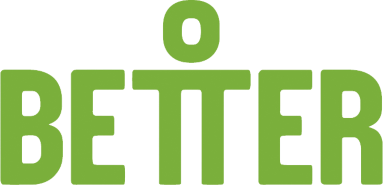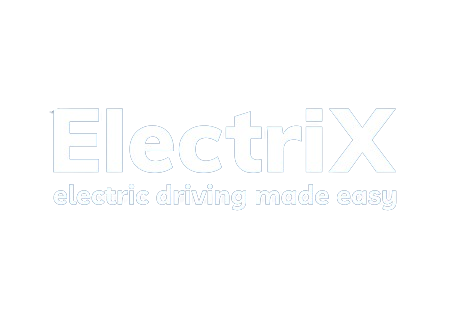In case you missed it see what’s in this section
Let's Talk
What Is The Difference Between 3G And 4G Internet?
Mobile Internet allows users not only to enjoy watching videos and communicating on social networks but also to solve various business problems on which production and profit depend.
It's not uncommon to have problems with 3G and 4G quality, but Tesco, Vodafone, and Three signal boosters can help solve some of them. In this article, you will learn about the difference between 3G and 4G and the features of these communication standards.
What Is 3G And 4G?
Within the 3rd generation of communication, the data transfer rate is an average of 3.6 Mbit/s. Having opened the general settings of the device, the user will see the UMTS option, which indicates compatibility with the 3rd generation network. The coverage map covers the entire UK. This made it the most popular among subscribers of various operators.
At the moment, all residents of large cities have access to the 4G communication network, which is also called LTE. By connecting to it, the user will be able to appreciate the benefits of the connection and high data transfer speed, which is an average 100 Mbit/s. Before switching to this standard, you should definitely check your device for compatibility. If a mobile device does not have a 4G function, the owner of the device will not be able to connect to the network of the required format.
Having studied all the advantages and disadvantages, you can understand what is better than LTE or 3G.
3G And 4G: What Is The Difference
Studying the connection parameters of various networks allows you to understand the difference between 3G and 4G. The third generation provides the user not only with access to the global network but also with a certain set of functions for communication. This communication standard is based on packet data transmission.
3G transmission speed allows mobile device owners to perform the following actions:
- visit pages of Internet resources using a computer;
- view mail;
- communicate via instant messengers;
- view pictures;
- download small files.
Within this network, the user can easily listen to music or watch videos online.
The 3rd generation communication network is represented by the following standards:
- UWC-136;
- DECT;
- TD-CDMA/TD-SCDMA;
- CDMA2000/IMT-MC;
- UMTS/WCDMA.
The last 2 technologies are the most widespread.
The main difference between 3rd and 4th generation networks is the difference in speed between 3G and 4G:
- The 3G network does not allow you to watch movies and videos in high quality, but with 4G this is easy to do;
- 3G has data transfer speed limits, and the 4th generation network provides high-speed Internet to the user;
- within 3G, many Internet services do not work correctly, but 4G does not have such problems.
These operating features help you understand how 3G and 4G Internet differ. The 4G communication standard provides almost unlimited possibilities when connecting to the Internet.
4G Features
Thanks to the increased requirements, 4G networks have a number of positive characteristics:
- The difference between 3G and 4G Internet is IP telephony. This function is not available on the 3rd generation network. The 4G standard allows you to communicate without voice delays.
- The big difference between 3G and 4G is expressed in the range of Internet signal reception. By connecting to a new generation network, the user will be able to transfer data even at a great distance from the base station. However, even if you are far from a cell tower and have a weak signal, you can use Vodafone, Tesco, or Three signal booster to improve it.
- Difference in 4G vs 3G speed. The 4G communication format provides the subscriber with high data transfer speeds, which reach 100 Mbit/s or more.
- Modern models of mobile devices allow you to automatically select the operating mode. If there is a loss of 4G signal, the smartphone will switch to 3G mobile Internet.
- When choosing LTE or 3G, you need to take into account your personal needs, as well as the capabilities of your device. The 4th generation standard maximizes user capabilities, which indicates its thoughtful operation. It can be called a natural continuation of 3G, which has improved performance, high data transfer speeds, and stability.
Improving 3G, 4G Signal Using a Booster
A booster is a reliable tool for strengthening 3G and 4G signals, in particular when the subscriber is remote from the cell tower or there are obstacles that reduce the signal strength.
When choosing equipment, pay attention to the following parameters: frequency range, power of the device itself, and gain. For greater confidence in the correct purchase, consult with a consultant and be sure that the equipment chosen with it will fully meet your requirements.
The basic kit usually includes a repeater, an external and internal antenna network, and a coaxial cable.
First of all, an external antenna is installed, because its correct installation directly affects the coverage radius and operation of the router. To select the location for its installation, you should use your phone to find a place with the best signal level; this place usually does not have any obstacles nearby for the signal to pass through.
Also, antennas are often installed on masts and pointed at the station with the worst signal. All this is done with the expectation that the repeater amplifies all operators in the operating frequency. As a result, it turns out that the maximum output power will be determined by the operator who will have the strongest signal.
After installing the antenna, run the cable from it to the room where the repeater will be located and connect it. For the antennas to operate correctly, it is necessary to provide them with sufficient electromagnetic isolation. To do this, it is necessary that the internal and external antennas are not in the line of sight, at least they should be separated by a wall. The repeater itself is usually placed on the wall. After fastening, the antenna and power supply cords are connected to it. Only when everything is placed and connected, plug in the repeater. If you did everything correctly, the system will please you with clear operation.
It is best to contact specialists who will help in the correct selection of equipment, its installation, and configuration.
Conclusion
The life of a modern person requires the constant availability of a mobile signal - for more effective communication and work, it is best to use 3G and 4G, depending on the network congestion and coverage. The life of a modern person requires the constant availability of a mobile signal - for more effective communication and work, it is best to use 3G and 4G, depending on the network congestion and coverage. To improve your stationary signal, we recommend using EE, Tesco, or Three signal boosters. You can contact UCtel for help in installing boosters in your home, garage, shopping centre, basement, etc.
Weather in Bath
Listings



















